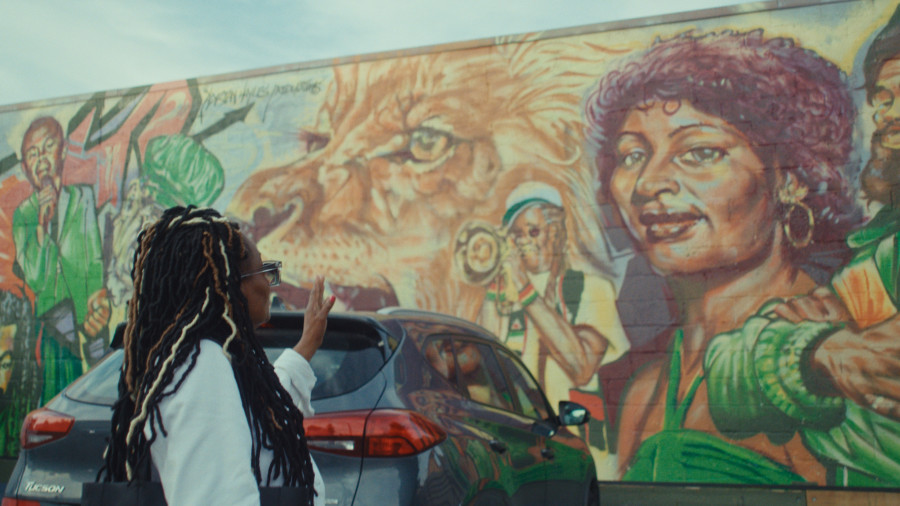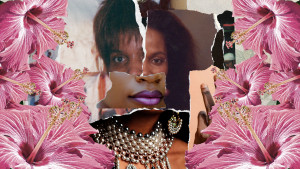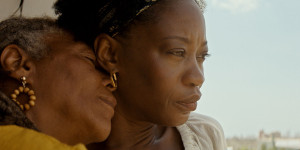From Rick James to Jackie Shane, we’ve constantly heard about how pop, soul and R&B have deep roots here. But we’ve never been truly exposed to the part Toronto has played in the history of one of the world’s most beloved genres of music—reggae.
Sounds & Pressure: Reggae in a Foreign Land is a five-part documentary that explores the convoluted yet dynamic relationship and history of reggae music in Toronto. It was written and directed by Graeme Mathieson and Chris Flanagan and co-presented by the National Film Board of Canada (NFB).
The documentary unearths the undocumented history of reggae icons who left a violent, political climate in Jamaica, and came to Toronto to create a creative hub and hotspot for their talents. While there are surprisingly many artists to choose from, the stories focus on the journey of the following five: the ska influences of Roy & Yvonne; the beautiful sounds of “Till I Kissed You” and “We Belong Together” Nana McLean; the ‘Godfather of Dancehall,’ Johnny Osbourne; The Heptones lead singer and ‘King of the Reggae Bassline,’ Leroy Sibbles, and the owner of one of the first Black-owned Canadian recording studios reggae artists called home, Summer Records’ Jerry Brown.
Rather than a full-on history lesson, the film takes us on a journey with layers of emotion coupled with each artist’s story. Rekindling love, artistic struggles, racism, discrimination and creative freedom all interweave in each episode. From Kensington Market and Eglington West’s historic Little Jamaica community to the outskirts of Malton, Ontario, they all served as a backdrop to classic hits from these reggae icons who still enjoy worldwide recognition today.
{https://www.youtube.com/watch?v=YNQMWPCOieY}
Cultural musical hotspots: Bathurst, Eglington West, and yes, Malton.
In each episode, the artists spoke about their hardships and how moving to Canada (particularly Toronto) for a better life would change their career trajectory. They discussed where their haunts were and where the institutions were built to help reggae music emerge at the forefront in Toronto. As Nana McLean stated in her episode: “They figure reggae is for bad people. Badman music. I think reggae is love. Pure love.”
Without the support of radio stations or record labels giving reggae a chance to thrive, the power of community came through. The Annex neighbourhood on Bathurst, particularly around Mirvish Village, has always been a cultural haven for Black people. It’s been known as Blackhurst dating back to the 1860s when former enslaved person Deborah Brown settled there after escaping slavery in the U.S. via the Underground Railroad.
In the 1950s and 60s, an influx of Jamaican and other Caribbean immigrants arrived and settled in the Bloor and Bathurst areas. It became a cultural community for Afro-Caribbean people to call home.
Many well-known record stores were housed along the Bathurst strip and Eglinton West area. In episode #3, The Godfather of Dancehall, Johnny Osbourne, reminisces about Tropical Records on Bathurst that used to carry their records. It’s where he recorded “Where Will I Go” in 1971.
Juno Award-winner Claudette “Nana” McLean, Canada’s Queen of Reggae, walks along the streets of Eglinton West in Little Jamaica to Reggae Lane where her face is immortalized on the infamous community mural. But she also stops along Eglinton West to share where community record stores like G-Clef (in the early ‘70s on Bathurst), George’s Record Store (in the late 60s on Eglinton West), Federal Records, and Record Factory, owned by Grammy Award nominee Bunny Gemini once stood.
Not to mention, McLean established her own prominent record shops, like Top Rankin Records, which were the pulse of a vibrant Little Jamaica. These hot spots in the city became cultural hubs where record buffs visited to purchase popular tracks and support these local reggae artists.
In 1969, Lloyd “Jammy” James aka Prince Jammy (known today as King Jammy) was a producer and helped artists to record Canadian-made reggae tracks. He was one of the first to do so, later hired to work as an engineer at the iconic Summer Records, owned and operated by Jerry Brown at the beginning of 1974. Brown and his partner Oswald Creary purchased this small studio in a semi-detached house on a dead-end street in far-out Malton would become a piece of Canadian reggae history. Aspiring artists and legends who passed through the Summer Records studio include Johnny Osbourne, Skatalites keyboardist Jackie Mittoo, Leroy Sibbles, Noel Ellis, and many more.
In 1978, Stranger Cole ran his record shop in Kensington Market called Roots Records, known as the first Caribbean business in Kensington. Four years later, Rannie “Bop” Williams opened Record Corner. One is a major reggae artist in Jamaica, and the other is a respected and accomplished session musician. Last, but surely not least, The BamBoo was also another community haunt on Queen Street West in the early 80s, where artists like Leroy Sibbles performed, and it is still talked about to this day.
Technicolour dreams became dreams deferred.
Listening to the artists discuss issues they had back then with getting credit for their songs in Jamaica is frustrating. Brown refers to the compensation struggle as, “Praise without raise” and Sibbles’ term for the producers back home was ‘pro-robbers.’ Even working with the Motown of reggae music, Studio One, couldn’t provide any weight. Left at the hands of crooked producers and promoters is part of the reason these already seasoned artists ended up here—like Juno Award-winner Sibbles—sometimes at the height of their career. But in the late 60s and early 70s, as racism and discrimination ran rampant in Canada, they didn’t let it deter their resilience and the Canadian content they had in store.
There’s so much to unravel from all five episodes. Between the history each reggae legend shares, there’s the ongoing support of the community, the lure of lost love, and the legacy that each of them has left behind in Toronto.
You can watch Sounds & Pressure: Reggae in a Foreign Land streaming for free on NFB.ca and apps.

 By
By 





